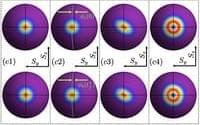A large-scale ad fraud operation called ‘Scallywag’ is monetizing pirating and URL shortening sites through specially crafted WordPress plugins that generate billions of daily fraudulent requests.
Scallywag was uncovered by bot and fraud detection firm HUMAN, which mapped a network of 407 domains supporting the operation that peaked at 1.4 billion fraudulent ad requests per day.
HUMAN’s efforts to block and report Scallywag traffic have resulted in its shrinking by 95%, although the threat actors have shown resilience by rotating domains and moving to other monetization models.









